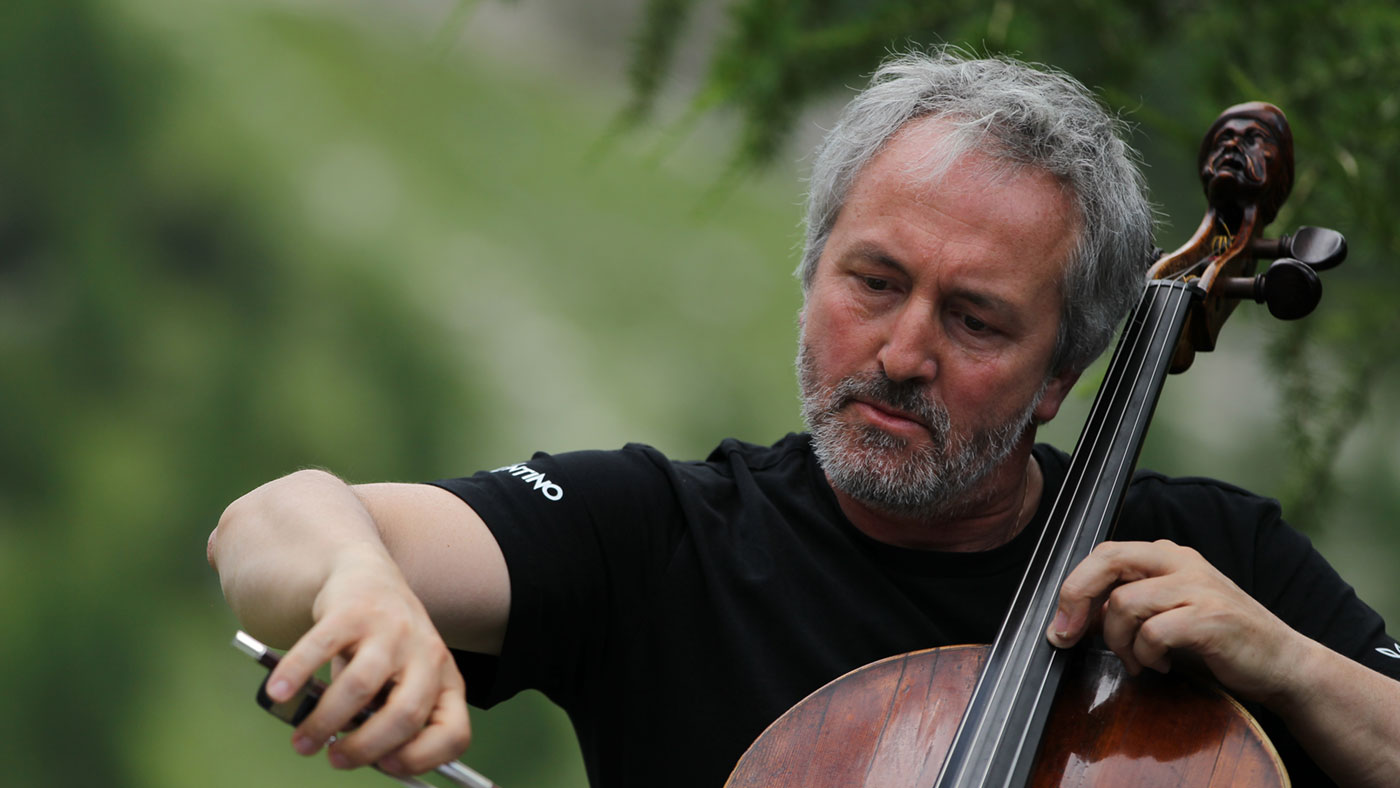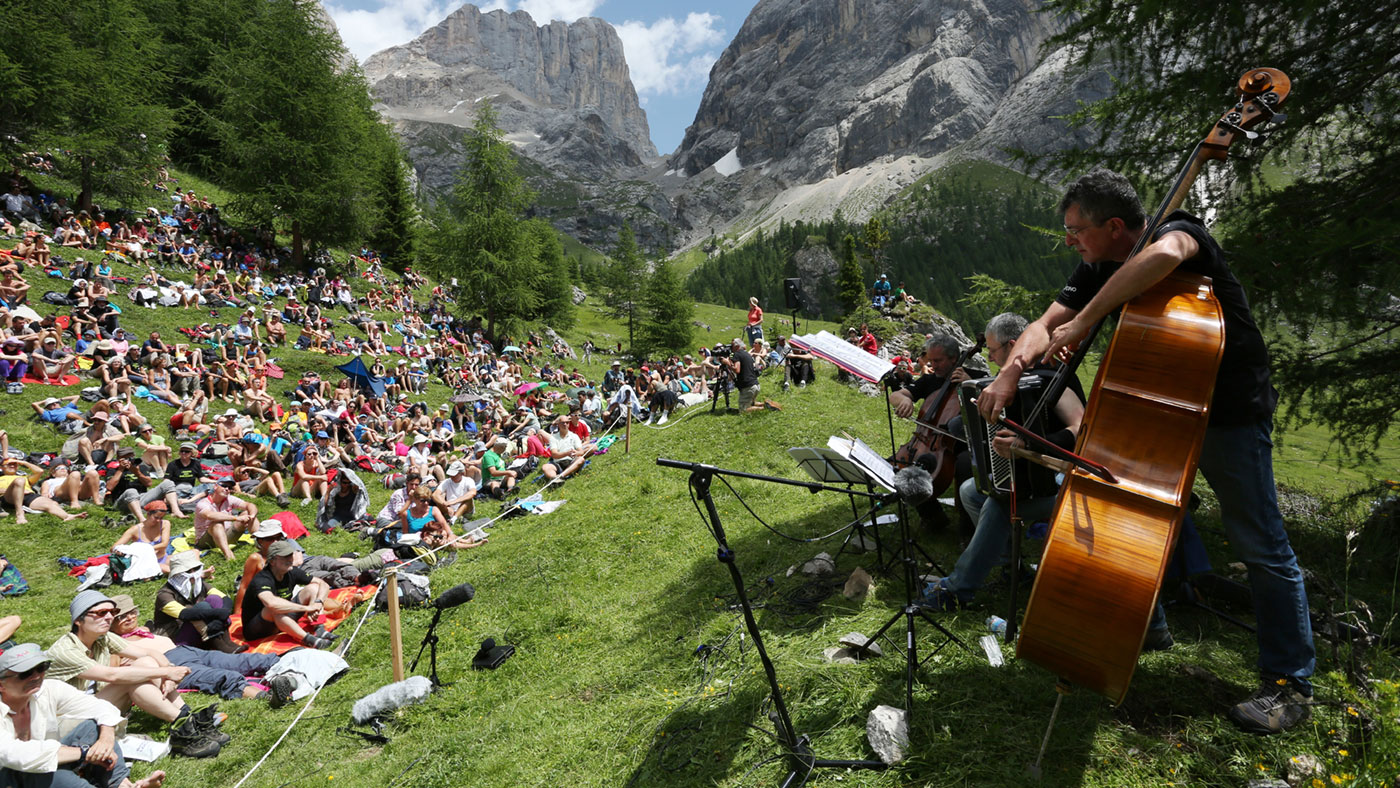The Sounds of the Dolomites: Extreme open-air concerts
Co-curator and cellist Mario Brunello describes this annual music festival held in the surrounds of the mountains of Trentino in Italy


Silence is something we rarely think about, yet it is a very important element in the mountains, in life and in music. All music starts from silence and returns to it. And when the musician plays the first note to break that silence, it fills the audience with a unique feeling of life.
The philosophy of Sounds of the Dolomites is not simply to play music in a great landscape, but to create an experience, which is special to the artist and the audience. For me, I think the festival is so special because major artists – for example, the 12 Cellists of the Berlin Philharmonic – accept the invitation knowing they will be challenged to create their own sound without the help of big concert halls. In a normal auditorium, the acoustic properties of the hall give back a familiar sound, one that the musicians and much of the audience will be expecting. Here, they cannot anticipate that. There are no physical limits to the space where they are playing, yet they have to fill that space with a unique sound.
It is not only a classical music festival. We also have big names from the world of jazz – such as pianist Chick Corea – and from pop, rock and blues – for example soloist Jack Savoretti – as well as world music.
The Week
Escape your echo chamber. Get the facts behind the news, plus analysis from multiple perspectives.

Sign up for The Week's Free Newsletters
From our morning news briefing to a weekly Good News Newsletter, get the best of The Week delivered directly to your inbox.
From our morning news briefing to a weekly Good News Newsletter, get the best of The Week delivered directly to your inbox.

A highlight of the festival is an incredible sunrise concert at 6am. The 3,000-strong audience walks up a mountain pass near Madonna di Campiglio for two or three hours with head torches in the middle of the night to arrive just in time for the sun to give the first light to the Dolomite rock. And the musicians have to walk up too, carrying their instruments. We have not found a pianist strong enough to carry his instrument yet – it is hard enough with a cello. It is very special having musicians and audience members walking together, living the same experience.
Sunrise is the most important time of day for people who love mountains, climbers always set off before dawn to give themselves more chance to make a summit safely. And sunrise gives you energy. We wanted to explore what would happen when you bring together music from below and the sun from above. Audiences often feel that connection very strongly. The Dolomites are also known as the Monti Pallidi [pale mountains], because the rock is a pale grey. But at sunrise and sunset, it reflects colour intensely. In the same way the music transforms the location. And, of course, as musicians we react to the surroundings – when the sunlight appears over the peaks, something burns within you. It is an aesthetic, mystical experience, which I find very nourishing. You really find yourself when you walk to a peak and look at what's beyond the summit.

When I play at The Sounds of the Dolomites, my programme is not, for example, strictly a Baroque or Mozart concert. I like to explore the possibilities and different languages of sound, and to think about the setting of playing in the mountains. I might start with some Bach as, for me, he's the starting point of music in western civilization, and also I feel his music has a similar profile to the mountains, as well as having the depth and meaning of the inside of a mountain. I could play a traditional song, which is usually sung when there has been a tragedy in the hills; or a contemporary classical meditation on solitude, written by a Sicilian friend of mine; or perhaps a Hurrian hymn from what is now Syria, the oldest known music – to reflect the eternal Dolomites.
My cello was made four centuries ago by Giovanni Paolo Maggini in Brescia in Italy, which was the centre of violin making before Cremona and Stradivarius. The pine gives it a strong frame and the soft maple skin resonates beautifully. In fact, the wood came from the Trentino Alps, where there is actually a forest called Foresta dei Violini [forest of violins] in the Fiemme valley. So to play here is to bring my cello home.
A free daily email with the biggest news stories of the day – and the best features from TheWeek.com
MARIO BRUNELLO trained at the Venice Conservatorio, after which he won the highly regarded International Tchaikovsky Competition. Since then he has performed with the London Symphony Orchestra, NHK Symphony Tokyo, Filarmonica della Scala, DSO Berlin and many other leading orchestras, as well collaborating with some of the world’s greatest musicians and conductors. In 1994, he founded the Orchestra d’Archi Italiana, which he conducts, and he is a visiting professor of the Royal Academy of Music. I Suoni delli Dolomiti (Sounds of the Dolomites) runs from 7 July to 31 August, with 24 events. For travel details, visit visittrentino.info; for concert details, visit isuonidelledolomiti.it
-
 The week’s best photos
The week’s best photosIn Pictures A new year dawns, a volcano yawns, and more
-
 8 incredible destinations to visit in 2026
8 incredible destinations to visit in 2026The Week Recommends Now is the time to explore Botswana, Mongolia and Sardinia
-
 Wave of cancellations prompt Kennedy Center turmoil
Wave of cancellations prompt Kennedy Center turmoilIN THE SPOTLIGHT Accusations and allegations fly as artists begin backing off their regularly scheduled appearances